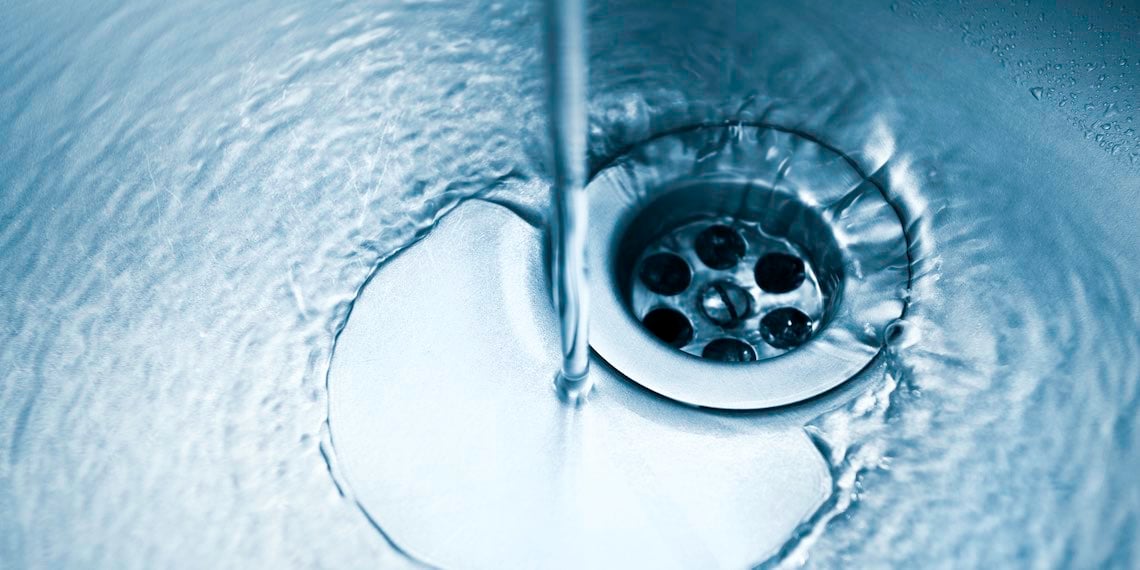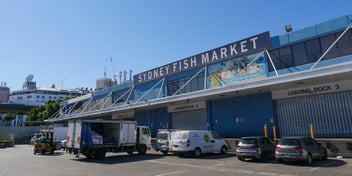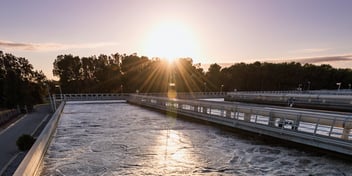New micro-treatment system offers domestic wastewater opportunity

The vast majority of domestic water is used for non-potable purposes. One innovative company has set its sights on making sure every last drop of domestic wastewater can be recycled and reused onsite.
Research and development enterprise Blackwater Treatment Systems (BTS) is developing a micro treatment system that retro-fits to existing septic systems, with the aim of converting domestic wastewater streams into onsite reusable water.
While there have been similar onsite recycled water units trialled, the BTS prototype is capable of treating all types of wastewaters, including blackwater, greywater, or sewage as a combination of both.
“The motivation for developing this system was to be able to reuse all domestic wastewater streams onsite. The aim is to truly harness all wastewater as a resource,” BTS founder Mark Freeman said.
“There was nothing on the market that gave the homeowner the opportunity to install an onsite system that has this capability — to treat all streams of wastewater for reuse.
“There's a lot of hype around new technologies carrying us through to more sustainable ways of doing things. But current decentralised wastewater treatment systems are still very selective in terms of the wastewater streams that utilise.
“WIth 97% of water being for non-drinking purposes, we should be able to utilise more wastewater streams. This unit is all about proving that this can be done; we can take all types of wastewater and bring it back to reuse standard.”
Testing the prototype
A prototype of the newly developed unit has been installed at a treatment plant for testing under worst-case conditions, as municipal sewage is significantly more contaminated than domestic sewage.
“It is very important for anybody that wants to do prototype development to conduct field research. The academic research and laboratory works are a great place to start,” Freeman said.
“But when you're working with wastewater, particularly in these municipal areas, that wastewater changes every day. And you've got to have robust technology to be able to deal with those changes.”
The prototype is the first onsite wastewater treatment system to reclaim clean water from the municipal sewage to develop a fully organic and sustainable on-site wastewater treatment and reuse process.
The unit incorporates an impressive array of technologies and features, including a biological digestion and preliminary clarification holding tank, dissolved-diffused air flotation and clarification, sustainable filtration media and backflush capabilities as a pre-filter to the submicron membrane filtration, and UV disinfection.
The unit also comprises a holding tank for clean water for filter backflushing and onsite reuse, remote monitoring capabilities and is compatible with sustainable energy sources.
Freeman said the new system takes technologies used in centralised wastewater treatment systems and shrinks it down to create a decentralised onsite system — but this work is not without significant challenges.
“The challenge is in engineering. While water treatment plants rely on a series of filtration systems. The idea behind the new unit is to engineer those processes to integrate, and to find ways of meeting multiple needs with less technology,” he said.
“This part of designing is not just about the desired outcome, but seeing how many outcomes you can get out of the one process.”
Furthermore, Freeman’s aim was to make the entire system sustainable, which added further challenges to technology selection and engineering during the design phase.
“Pre-filtration was a real challenge because I wanted a filter that could be backflushed, but also wanted the media in that filter to be reusable and completely sustainable. So I went for recycled glass,” he said.
“This is a real breakthrough. We can use recycled glass spheres instead of sand. Usually, we'd have sand filters and, once they're clogged up, they end up in landfill. But when the glass filter clogs up, it can be washed off and reset back into the filter again.”
The UV treatment capability also had a few challenges to overcome. Freeman said that while UV lamps work very well for treating potable water, they can’t be turned off within the unit and require a cooling mechanism so as not to overheat.
“We had to develop a cooling program utilising what we already had within the technology. The piping was designed to run through the filter and back through the UV lamp. So we ended up achieving a cooling process and an extra level of filtration,” he said.
“It was all about looking at how many options can come out of one process. We use aeration to move particles out of the water, but we also use that air to scrub the filter membranes. So the same air pump does two jobs.”
Engineering new outcomes
Freeman said that while off-the-shelf products are on the market, the real challenge was re-engineering technologies already available to meet the requirements of a decentralised, onsite system.
“Being able to get these technologies to work in this environment is the issue — they really haven't been put through such a demanding process,” he said.
The prototype's programmable logic controller operates a fully automated treatment and reuse program and a fully automated maintenance program, which is 4G-connected for remote monitoring, servicing and text notifications.
Freeman said the BTS prototype reclaims clean water from sewage at 250 litres per hour for recycling and reuse, and has the potential to extend a blackwater treatment system to a resident population of 100 people.
Reuse applications include toilet flushing, water supply for washing machines, irrigation for gardens, outdoor water features, car, truck or house washing, as well as any other non-potable application.
From an international perspective, Freeman said the prototype could have an important role in contributing to reaching the Sustainable Development Goals by 2030 and contribute to increased access to sanitation worldwide.
Freeman said the technology is available, and has been for some time, but developing the prototype required rethinking it for new and more sustainable uses.
“My aim is to set a benchmark. I want to produce a very clear example of what’s possible when it comes to onsite wastewater treatment systems and resource recovery. It’s just the beginning, though. I hope others take the approach further and improve on it in future,” he said.
“Technology always evolves. And if we make a start somewhere, then the next generation of engineers will likely be able to do it even better.”


